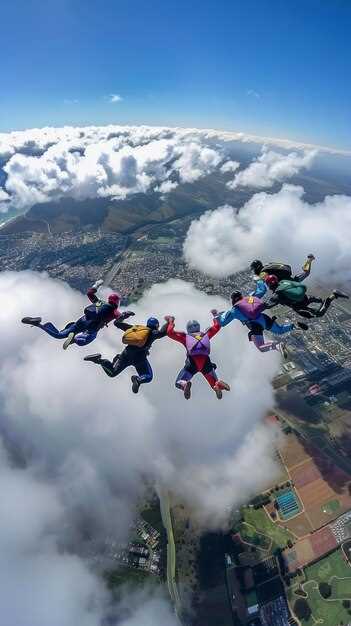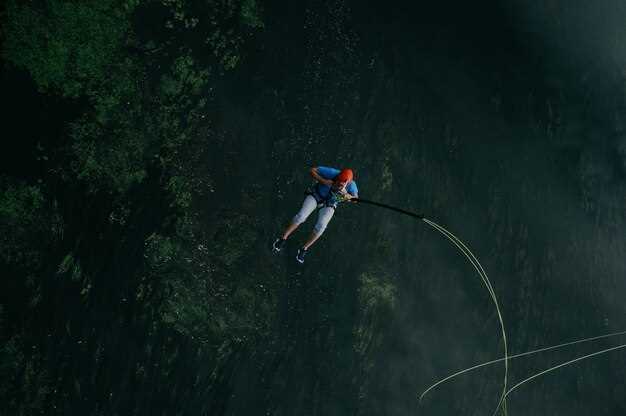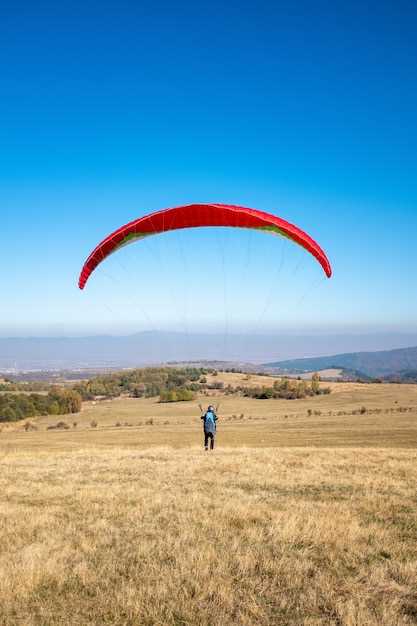
For your first jump, start with Queenstown, where experienced operators guide you through a safe, jaw-dropping flight over lakes and alpine peaks. If Queenstown schedules don’t fit, Auckland and Wanaka offer convenient options with the same level of safety and stunning views of islands and coastal bays.
Each flight is tailored to your preferences and your comfort level. Whether you’re taking your time to savor the approach or going for a longer freefall, you will feel supported by skilled instructors and real-time briefings. indoor briefings help you settle in before the doors open, so you can imagine yourself climbing toward the sky with something to grab onto.
In Queenstown, you jump above the lakes surrounding the Remarkables range; Wanaka reveals a jaw-dropping panorama across Lake Wanaka and the Southern Alps; Auckland channels glistening harbor views and nearby islands that add variety to your jump menu. The best combination is to plan a sequence that fits your schedule and preferences.
When choosing a seller, compare packages from several operators to find a convenient deal that matches your budget and each preference, taking weather windows into account. Check for certified instructors, up-to-date gear, and flexible timing. Ask about franz media options, photo and video packages, and how they capture your face and your eyes on the way down. Some packages include a post-flight debrief and a short ground video–a nice way to relive the experience with friends.
In short, choose Queenstown first, then Auckland or Wanaka if you want to diversify your schedule. Each jump is an opportunity to push your boundaries and return with a jaw-dropping keepsake, captured by skilled instructors who know how to make the ride smooth and safe.
Skydive in New Zealand Guide

Book a certified tandem with a licensed operator for your first jump and secure a safe, unforgettable experience above dramatic terrain.
Expect a standard 12,000 ft jump with an option to upgrade to 15,000 ft at most Queenstown, Wanaka, and Auckland bases. Flights climb over towering peaks and sapphire lakes, delivering a glowing panorama of mountain scenery and coastlines. The landing zones sit on well-maintained runways with clear pre-flight instruction from a qualified instructor.
The system centers on certified instructors, updated equipment, and rigorous checklists. The need for pre-booking remains high during peak seasons, ensuring you a guaranteed slot. Those who feel anxious can rely on calm, step-by-step briefings that foster peace during the ascent and jump sequence.
In planning, compare altitude options, flight durations, and weight limits, then choose a package that fits your goals. The most enjoyable experiences come from operators with transparent safety records, positive guest reviews, and real-time weather updates. There’s no substitute for a qualified guide who explains each move clearly before you step into the plane. Regardless of the spot, you’ll share the air with a punctual crew and planes that carry you toward dramatic horizons.
Queenstown offers views of snow-capped mountains above Lake Wakatipu, Wanaka highlights Mount Aspiring country, and Auckland treats you to coastal and island scenery. Those who want a strong alpine welcome should consider Wanaka’s backdrop, while those after expansive scenery may prefer Queenstown’s lake-and-peak combo. For a mixed itinerary, you can time a jump near sunset to let the mountains glow and the water surfaces reflect the fading light. The trifecta of lake, mountain, and glacier sights makes Wanaka especially memorable.
источник tips from operators emphasize safety checks, weather windows, and proper warm-up routines. If you’re curious about nearby activities, consider pairing your skydive with a canoe excursion on a calm lake, as the calm moment before the flight often complements the overall experience. Westland views sometimes appear on longer flight paths, depending on the weather and airspace permissions. Most jumpers rate their experience as highly enjoyable, and many return for a second jump to chase another vantage point or altitude.
|
Sijainti |
Altitude options |
Typical season |
Price range (NZD) |
Notes |
|---|---|---|---|---|
|
Queenstown |
12,000 ft; 15,000 ft |
Sept–Apr |
299–399 |
Iconic lake and mountain panorama; limestone basins; landing on a prepared field near the lake |
|
Wanaka |
12,000 ft; 15,000 ft |
Sept–Apr |
329–399 |
Trifecta of lake, mountain, glacier views; stable weather commonly yields clear sightlines |
|
Auckland |
12,000 ft |
Year-round |
299–349 |
Coastal and island vistas; calmer seas can extend flight windows |
Queenstown Tandem Skydive: Top Operators, Jump Heights and Aircraft Details
Book NZONE Skydive Queenstown’s 15,000 ft tandem for an adrenaline-pumping descent, allowing you to capture glaciers and lake views as you pass the edge towards the skies.
NZONE Skydive Queenstown offers three common heights: 9,000 ft (2,743 m), 12,000 ft (3,658 m) and 15,000 ft (4,572 m). The ascent is performed by a helicopter or a fixed-wing aircraft depending on weather and airspace, with your jump time secure by certified instructors and service that prioritizes safety and comfort.
Two popular options in the Queenstown area are NZONE Skydive Queenstown and Skydive Queenstown, both offering altitude choices from 9,000 ft to 15,000 ft. The fleets rely on helicopters such as Airbus H125 or Robinson R44 to reach height quickly, with Cessna 208 Caravan used for longer, scenic runs.
Begins with a safety description, equipment check, and a weather briefing, then a ride to the departure point. The experience takes about an hour from check-in to landing, with the jump itself lasting around 60 seconds of freefall, and a longer canopy ride designed for individuals and thrill-seekers alike, creating a memorable moment.
Cancellation options and refunds are published by each operator; if you requested a change, contact them quickly to protect your investment and keep the booking secure. For travellers from Albany, secure pickup options from select meeting points are available on request, adding flexibility when schedules shift.
Auckland Tandem Skydive: City Views vs. Coastal Scenery, Best Drop Zones
Choose Ardmore for absolute city views of Auckland, including the harbour and Rangitoto, with the skyline mirrored on calm water as you leave ground and begin flying. For adrenaline-pumping coastal scenery, select a west-coast route toward Piha or Muriwai. The briefing is concise and safety-focused, and youre guided by certified instructors from the moment you arrive so the transition from ground to sky is smooth and totally controlled.
Best Drop Zones in the Auckland region cluster around Ardmore (Skydive Auckland) for city-and-harbour perspectives, while coastal options head toward Piha and Muriwai when conditions allow. Ardmore delivers a guaranteed level of safety, with ground teams and instructors coordinating the jump and ensuring you stay safely strapped in before you leap. If weather turns, cancelled sessions are handled quickly, with rescheduling opportunities that fit within years of planning and keep your adrenaline going without a long wait.
On the day, you’ll go through a brief briefing that covers equipment, safety procedures, and the plan for the jump. Youll feel the energy rise as you step into your harness, then you’ll be lifted into the air and go from standstill to flying. The ground crew will guide you through every step, and the canopy ride offers a perspective that makes you rest your nerves and soak in the views. When you touch down, you’ll likely be speechless, having witnessed a scene where the sea acts as a mirror and the city provides a dramatic backdrop–an unforgettable moment that theyre sure to remember for years.
Practical tips to make the most of Auckland jumps: select a package that includes ground-to-air photography or video so you can relive the moment, and add a special keepsake option if you want print-ready images. Book morning slots when winds are typically calmer, and prepare for a brisk ascent even on mild days. If a session is cancelled due to weather, you can usually rebook quickly; their team will propose the next best window so you stay in control, go again soon, and avoid missing your preferred dates.
Wanaka Tandem Skydive: Scenic Routes, Seasons, and Optimal Timing
Reserve a Wanaka tandem skydive at 15,000 ft for a memorable, adrenaline-pumping experience with a picturesque view of Lake Wanaka and the Southern Alps. You’ll be strapped to an experienced skydiver, and the moment you exit is speechless as you flood the sky with a freefall that lands smoothly back on the airstrip near Wanaka Airport. Confirmation arrives via email after booking, and again on arrival, keeping you in the loop throughout the process.
Scenic routes and flight paths maximize the entire experience, with options typically including a glide over Lake Wanaka, views of the Mt Roy region and the Pisa Range, and a sweeping pass along the western shore before landing. The route can vary with wind, but you’ll always start from Wanaka Airport and land on the runway.
- Lake Wanaka and Southern Alps route: lake reflections, towering peaks, and occasional glimpses of glacial valleys for a truly picturesque perspective.
- Mount Aspiring National Park route: alpine valleys, rugged ridges, and dramatic snow-capped summits in view throughout the jump.
- Shoreline and islands route: a glide over the lake surface with occasional islands visible on clear days, adding variety to the canopy ride.
Seasons and weather influence visibility and comfort. In summer (Dec–Feb) you’ll enjoy long daylight and typically clear skies, with mornings often offering the calmest conditions. Autumn (Mar–May) brings crisp air and golden light, while winter (Jun–Aug) adds snow on distant peaks and requires warmer layering. Spring (Sep–Nov) offers fresher air and rapidly improving conditions as days lengthen. Usually, mornings provide the best balance of light and wind for stable jumps; plan for a window that allows a clear sky and minimal cloud cover.
- Summer: high visibility, warm temps, and extended daylight; ideal for photographers and first-timers seeking bold photographs.
- Autumn: comfortable temperatures, rich colours, and reliable morning windows before diurnal heating causes wind shifts.
- Winter: cold starts but spectacular snowy peaks; cloud ceilings can limit options, so be flexible with dates.
- Spring: variable but increasingly reliable; early slots often offer the quietest air and best light.
Optimal timing and practical tips help you maximize the moment. Choose an early-morning slot to catch calmer air and the best light on the water and peaks. Check the forecast for wind at altitude and cloud base, and avoid days with forecast strong gusts or low ceilings. Plan for 60mins on-site for check-in, gear, briefing, and the jump itself. If you’re afraid, know that the tandem setup is assured and you’re supported by an experienced skydiver who guides you through every step. During the jump, you’ll feel the rush without losing control, and you’ll land with confidence to celebrate the moment with your crew.
- Book a time window with the morning crew for the most stable conditions and best lighting for photos.
- Arrive 60mins before your scheduled jump for check-in and safety briefing; avoid rushing on the day to keep nerves steady.
- Choose the 12k ft or 15k ft option based on comfort and time; 60–90 seconds of freefall are typical, depending on height and weight.
- Follow your instructor’s cues and strap procedures precisely; the gear is routinely checked and used by skydivers across the Southern Alps region.
- After landing, review your photos and video; most operators provide a digital confirmation within 24 hours and a ready-to-share package.
Travel note: if you’re based in Albany, plan connections through Auckland to Queenstown or Wanaka, and allow time for a short drive to the drop zone. This setup ensures a smooth experience from start to land and makes the most of Wanaka’s iconic views without rushing any moment of the conquest.
Experience Timeline: Booking, Check-In, Gear-Up, Jump, and Post-Jump Procedures

Book your slot well in advance and arrive at least 60 minutes before the departure to secure a preferred window and a smooth start. The operator confirms your booking via email or SMS, with the exact meeting point at the skydiving base and a detailed plan for the day.
Check-in begins with ID verification and medical clearance as required. The briefing covers harness fit, body position, hand signals, and how the jump unfolds. Expect a concise briefing that emphasizes safety and confidence before you proceed. Wear comfortable clothing and sneakers to fit under the gear.
Gear-up happens in a dedicated area where a trained team fits the harness, helmet, and goggles. A digital checklist guides the process, and altitude-monitoring technologies are used to verify readiness. A quick tick on each item signals that everything is set for the ride.
Departure occurs when you step to the door; the countdown signals the moment to exit with your partner. A helmet camera or handheld video captures the flight, while onboard telemetry tracks altitude and heading to ensure a controlled start. The backdrop of rugged peaks adds to the thrill as you settle into the glide.
During the drop, you follow the tandem partner’s lead and enjoy the controlled air time. The parachute deployment brings a smooth glide, and you can take in the sights below with the guide’s guidance. The landing is guided to a soft touch in the designated area.
Post-jump: Ground crew help to unclip and store equipment. You receive your video or photo package and a digital certificate. A brief debrief recaps what happened and how to plan a follow-up jump if you choose.
Cancellation and weather: If weather blocks the schedule, cancellation or rebooking options exist with clear terms. You can rebook for another day without penalty or receive a refund per policy. Stay flexible and monitor the forecast to maximize the chance for a memorable flight.
Practical Prep: Health Requirements, Age and Weight Limits, What to Wear and Weather Considerations
Get medical clearance and confirm weight limits with your operator at least 24 hours before the jump. Health requirements vary by centre, but safety teams screen for conditions that could affect breathing, heart function, or your response to altitude shifts. The источник of truth for your trip is the operator’s pre-flight checklist, not a rumor, so rely on that official guidance to plan with confidence.
Age and weight limits: The minimum age is typically 12 with parental consent; some centers accept 14+. The upper weight limit is commonly around 100 kg (220 lb), with a few centres up to 110 kg after a safety assessment. If you’re near the limit, call ahead for a pre-flight assessment and accessibility options. Over the years, operators have refined procedures to keep these limits safe while still welcoming most guests.
What to wear and how to prepare: Dress in layers and wear sturdy closed-toe shoes. Tie back or braided hair to keep it neat under the helmet; secure any jewelry. Youll be harnessed into the tandem rig and the staff will adjust the harness for a snug, secure ride. Bring only what you need to avoid clutter and ensure there’s space for your camera and gloves if needed. This simple setup makes the five steps of the check-in flow smooth and quick.
Weather and environment: NZ weather shifts around the mount and along the coast; wind, visibility, and precipitation drive decisions on whether to fly. Flights can be cancelled or postponed if safety thresholds aren’t met. Mornings near the island edges are often cooler, so layer up; a glowing sunrise or sunset can give you awe-inspiring photos, but be ready for changing conditions that shift your perspective towards harsher conditions and safer alternatives. If the window opens, youll ride towards the horizon with the mountains in the background and a view that feels soaring.
Day-of logistics and extras: Arrive at the terminal about 60mins before the jump to complete check-in and the safety briefing. If you requested extra equipment or a specific camera angle, confirm it at the counter. Accessibility options exist at some locations, with staff guiding you through every step so the experience remains smooth and inclusive. Youll be able to capture the ride and share highlights afterwards; many outfits offer a post-flight video so youll actually relive the moments and tell your friends the story behind every amazing jump. If weather cancels, operators reschedule or arrange an alternative window so you don’t miss the adventure. If you’re running late, scoot to the counter to speed things up and keep your plans on track.
